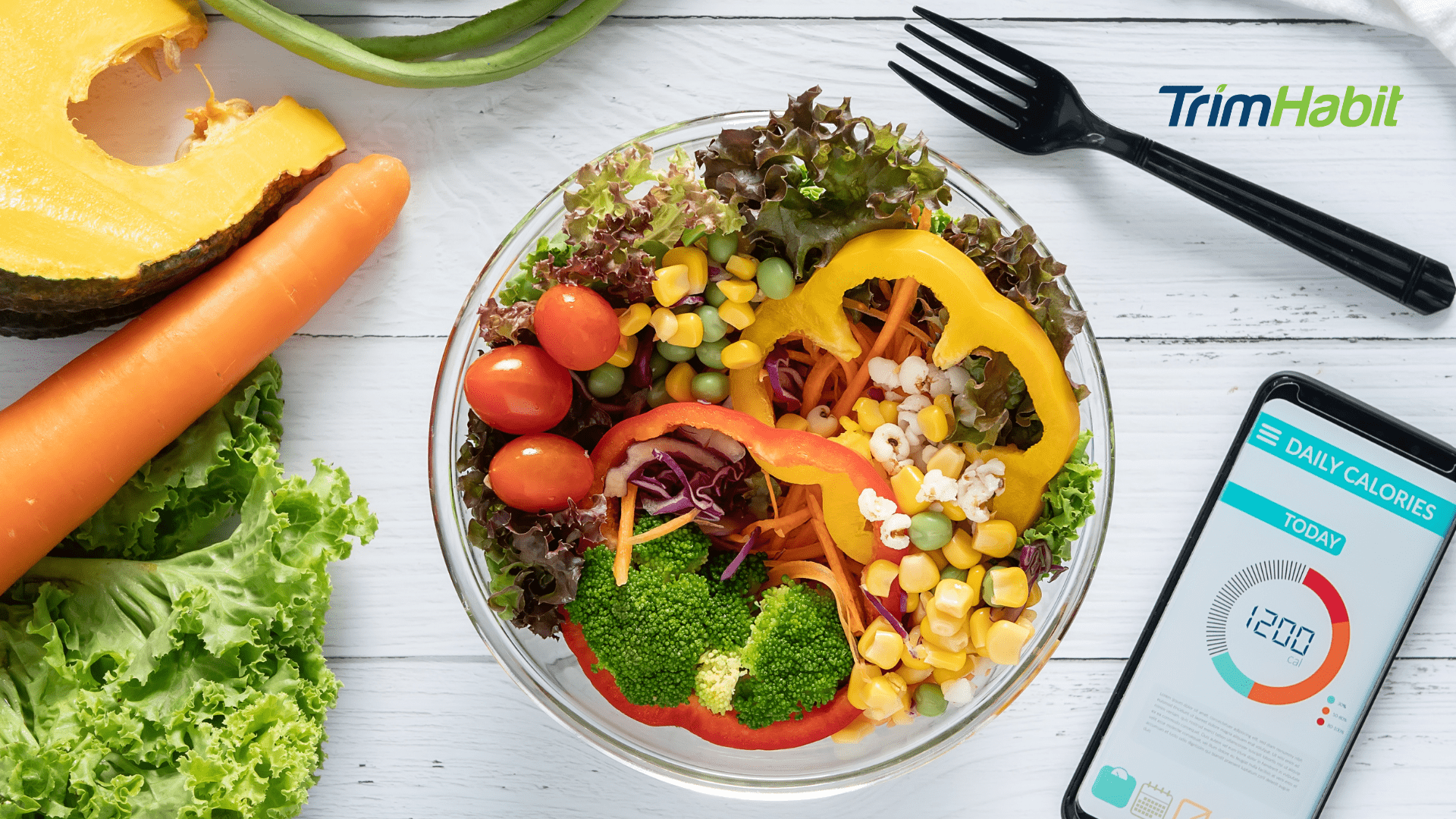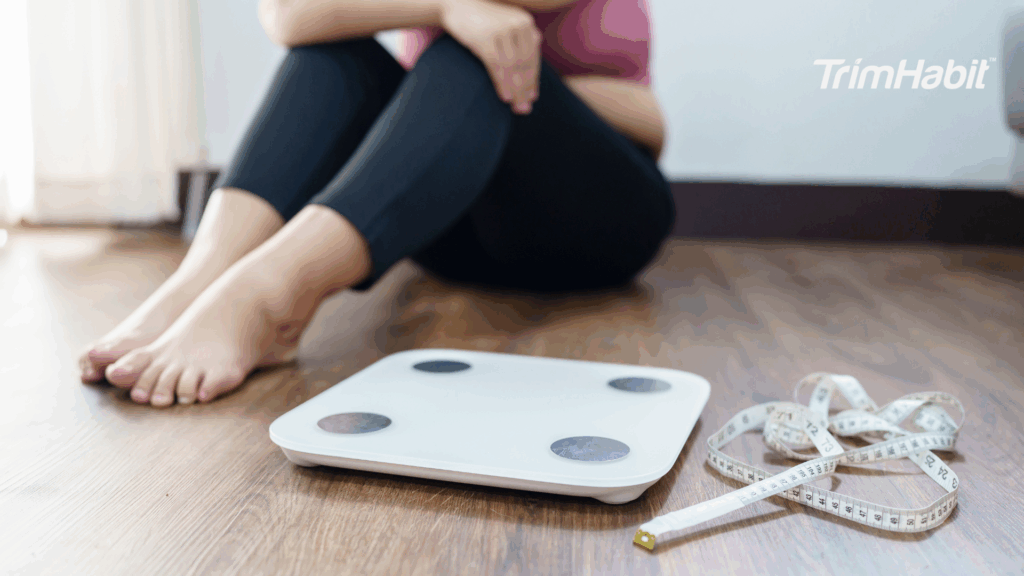Taking semaglutide can help you feel fuller faster, which can make eating feel like a completely different experience. This medication works by lowering blood sugar, slowing digestion, and decreasing appetite, which all support weight management and metabolic health. However, it also changes how much and how often you feel like eating.
That’s where an easy 1200-calorie meal plan for semaglutide users comes in. With a little structure and a focus on simple, healthy foods, you can eat in a way that feels comfortable, balanced, and effective for your weight loss journey. A well-planned diet can help keep blood sugar levels stable, maintain muscle mass, and support long-term energy.
Why 1200 Calories Makes Sense (Sometimes)
For people taking semaglutide, appetite is often reduced dramatically1. That means you may eat fewer calories without trying. A 1200-calorie diet plan offers a helpful structure, especially when your hunger cues are weaker than usual. This calorie level works well for short-term weight loss while still giving your body the nutrients it needs.
Still, this is not about restriction. It’s about focusing on high-protein, nutrient-dense foods that support muscle mass, blood sugar management, and your health. A proper meal plan gives you structure and keeps you from skipping meals or making choices that lead to blood sugar spikes later on.
The Foundations Of A Semaglutide Diet Plan
When you’re building your meal plan, the quality of your food matters more than ever. To maximize weight loss and keep your blood sugar levels stable, your meals should include:
- Lean proteins (like grilled chicken, eggs, tofu, or cottage cheese)
- Non-starchy vegetables (like steamed broccoli, bell peppers, and green beans)
- Healthy fats (like half an avocado, olive oil, or nuts)
- Whole grains (such as brown rice or whole grain toast)
These food choices not only help with blood sugar control, but also promote sustainable weight loss. Eating healthy foods doesn’t have to be complicated. A focus on simplicity can make your diet plan easier to follow.
Incorporating these staples also supports your protein intake, which is essential for preserving muscle mass2, especially during a reduced calorie intake. When your meals are balanced with protein, healthy fats, and complex carbohydrates, you avoid the kind of blood sugar spikes that can lead to fatigue or cravings.
What To Eat: Sample Meal Plan For 1200 Calories
This meal plan includes three meals and two snacks. It uses whole, nutrient-dense foods that support metabolic health, muscle mass, and satiety. Each meal is designed to be simple, flavorful, and gentle on digestion.
Breakfast (300 Calories)
- 2 boiled eggs
- 1 slice whole grain toast with a light smear of olive oil
- 1/2 cup mixed greens with cucumber slices and cherry tomatoes, dressed with lemon juice and fresh herbs
This meal is rich in protein, low in sugar, and packed with nutrients. Eating slowly gives your body time to register fullness. Mixed greens and fresh vegetables support digestive health without causing bloating. The olive oil adds healthy fats that help you stay satisfied longer.
Morning Snack (100 Calories)
- 1/2 cup plain Greek yogurt mixed with 1 teaspoon chia seeds
This snack adds protein and fiber to keep your blood sugar levels stable. Chia seeds also provide omega-3 fatty acids, which support heart health and digestion.
Lunch (350 Calories)
- Whole grain tortilla wrap with grilled chicken, fresh spinach, and green onion
- 1/2 cup steamed broccoli on the side
This is a high protein, fiber-rich lunch that supports blood sugar management and helps preserve muscle mass. The whole grain tortilla adds fiber and complexity to your carbohydrates, reducing the risk of blood sugar spikes.
Grilled chicken provides lean protein without added fats, while the fresh spinach and green onion give you a dose of antioxidants and vitamins. Steamed broccoli is a great non-starchy vegetable that adds bulk without extra calories.
Afternoon Snack (100 Calories)
- Vegetable sticks (cucumber, bell peppers, carrots) with 2 tablespoons plain yogurt dip
These crunchy, non-starchy vegetables offer volume with fewer calories, supporting your calorie deficit. Dipping them in plain yogurt adds some protein and probiotics, which may help with gut health.
Cucumber slices and bell peppers are hydrating and rich in antioxidants. Eating snacks like this can help you maintain frequent meals throughout the day, even when your appetite is low.
Dinner (350 Calories)
- 3 ounces lean meats (grilled chicken or turkey)
- 1/3 cup cooked brown rice
- Sauteed green beans and cherry tomatoes with a drizzle of olive oil
This meal includes lean proteins, whole grains, and healthy fats, making it a strong finish to the day. The fiber in brown rice and the nutrients in green beans support stable blood sugar levels overnight. This combination supports muscle maintenance and keeps your energy steady into the next day.
Eating a balanced diet at dinner time can also help reduce late-night snacking, which is common when hunger cues are confusing or delayed from semaglutide.
Smart Swaps And Add-Ins
If you want to shake things up or add variety, try these:
- Swap plain Greek yogurt for cottage cheese
- Add protein powder to smoothies for extra protein intake
- Use fresh herbs to enhance flavor without salt
- Mix in fresh spinach to soups or eggs for added fiber
- Try foods high in fiber like lentils or oats to support digestion
You can also try incorporating more vegetable-based proteins if you’re following Mediterranean and Flexitarian diets. Legumes, tofu, and tempeh are excellent options.
Hydration And Timing Tips
Hydration matters just as much as food, especially when taking semaglutide. Dehydration can increase the risk of constipation and nausea.
- Drink water regularly throughout the day
- Avoid drinking large amounts immediately before meals
- Herbal teas like peppermint or ginger can help with bloating or nausea
- Electrolyte-enhanced beverages may be helpful on active days
Eating slowly and spacing out meals into frequent meals can also help. It gives your digestive system more time to adjust and helps you better understand your hunger and fullness cues.
Foods To Limit While Taking Semaglutide
Certain foods may cause discomfort, nausea, or blood sugar spikes. To keep your eating habits supportive of your semaglutide diet plan, try to limit:
- Fried foods
- Processed foods
- Sugary snacks and drinks
- High-fat, greasy meals
- Excessively salty foods
These foods often lack fiber and nutrients and can interfere with blood sugar control. They may also lead to bloating and energy crashes.
Instead, choose nutrient-dense meals that support blood sugar management and your health. A well-balanced plate that includes lean meats, whole grains, and non-starchy vegetables is far more helpful for long-term results.
Frequently Asked Questions
How much protein should I eat?
Most people benefit from including protein-rich foods at every meal. This can mean 15-30 grams of protein per meal, depending on your weight and activity level. Protein helps preserve muscle mass and supports weight loss. Talk to a registered dietitian if you need help tailoring your intake.
Is it better to eat frequent meals or larger meals less often?
Frequent meals can help you maintain stable blood sugar levels and avoid fatigue. However, semaglutide often reduces hunger, so mindful eating and listening to your body is more important than following a strict schedule. Focus on eating when you’re hungry and choosing foods that support blood sugar control.
Can I follow Mediterranean and Flexitarian diets while on semaglutide?
Yes. Both Mediterranean and Flexitarian diets prioritize nutrient-dense foods, lean proteins, healthy fats, and whole grains. These diets promote sustainable weight loss and support long-term health. They also reduce the reliance on processed foods and encourage more plant-based options.
Will this help me lose weight?
When paired with semaglutide, a reduced calorie intake through a healthy diet can help you lose weight more effectively. The key is to prioritize nutrient-dense foods and maintain a small but consistent calorie deficit. Regular physical activity and mindful eating help maximize weight loss results.
More Meal Ideas To Extend Your Plan
Here are more meals and snack ideas to help you build on this meal plan without increasing calories too much:
Breakfast Ideas:
- 1 slice whole grain toast with cottage cheese and cherry tomatoes
- Plain yogurt with berries, chia seeds, and slivered almonds
- Smoothie with protein powder, spinach, frozen berries, and water
Lunch Ideas:
- Tuna salad lettuce wraps with olive oil and lemon
- Quinoa salad with grilled chicken, mixed greens, and fresh herbs
- Egg scramble with bell peppers, spinach, and a slice of whole grain toast
Dinner Ideas:
- Baked tofu with roasted bell peppers and brown rice
- Ground turkey sautéed with zucchini and green onion over quinoa
- Salmon with steamed broccoli and half an avocado
Snack Ideas:
- A boiled egg with a sprinkle of salt and pepper
- Cottage cheese with sliced cucumber
- Protein shake with plain protein powder and unsweetened almond milk
These meals are designed to be filling and balanced while supporting your weight loss journey.
Final Thoughts
This easy 1200-calorie meal plan for semaglutide users focuses on steady energy, simple ingredients, and blood sugar control. Even if you’re beginning your weight loss journey or adjusting your eating habits after starting the medication, this plan offers a foundation you can build on.
Focusing on nutrient-dense, high-protein meals with healthy fats and whole grains supports metabolic health while keeping hunger and side effects manageable. With time and mindful eating, you can create lasting changes that benefit your body weight, energy, and lasting health improvements.
If you’re unsure how to begin or need a custom approach, reach out to a registered dietitian who can tailor a plan to your specific needs. With consistent effort and attention to your body’s needs, you can experience the full health benefits of this approach, including sustainable weight loss, improved energy, and better blood sugar control.
Remember, your journey is unique. Keep focusing on how you feel, what helps you thrive, and which foods work best for you. Prioritize nutrient-dense foods, monitor your hunger cues, and enjoy the long-term rewards of a balanced diet and better health.









